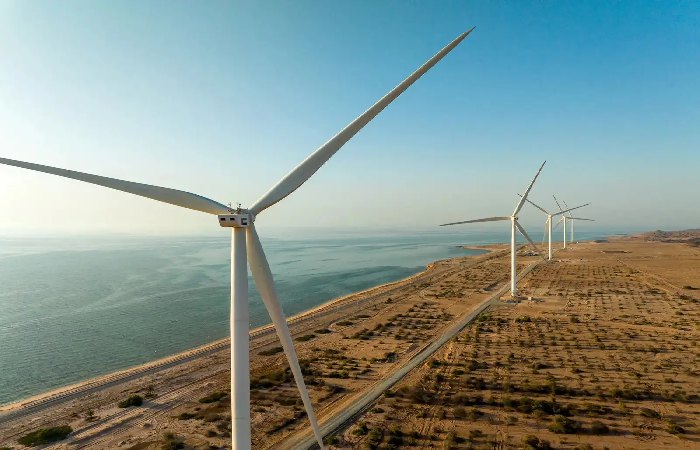
Wind Turbines Write For Us – The expansion of wind energy is essential to achieve the energy transition goal, to convert the energy supply to renewable energies – in the electricity sector, heating, and transport.
The first windmills had a vertical hub. They were probably first built in Persia (modern-day Iran) and used to grind flour.
Wind power is currently the cheapest form of power generation. The wind almost always blows – at least at the lofty heights at which the rotor blades turn in modern wind turbines. Installing wind turbines is also comparatively cost-efficient. Several operators or energy cooperatives with many citizens can share the investment costs of wind turbines.
If you want to write for our blog, please get in touch with Us by clicking at contact@primewebreviews.com
Wind Power For The Energy Transition
Wind turbines significantly contribute to expanding renewable energies – on land and increasingly on the high seas. Wind power has long been the most vital source of energy. But what characterizes wind power as an energy source? How tall is the untapped potential for a climate-neutral energy supply?
A wind turbine is, on average, 90 to 130 m high (hub height), the rotor diameter is up to 90 m, and the nominal output is 2 – 5 megawatts (MW), offshore (in the sea) up to 15 MW. The new generation of wind turbines sometimes reach impressive proportions: they can be up to 240 m high, including the rotor blades. By the way: The largest wind turbine in the world is currently in Germany: The largest wind turbine was built near Stuttgart in 2017 at 246.5 meters.
How Do Wind Turbines Work?
As a free energy source, the wind is available in unlimited quantities. Wind turbines use the power of nature. As the heart of a wind turbine, the rotor, with its glass or carbon fiber reinforced rotor blades, first converts the wind’s kinetic energy into mechanical rotational energy. As on an airplane’s wings, the wind flow on the aerodynamically shaped rotor blades creates a lift that causes the rotor to rotate. This rotor is connected to a generator in the nacelle, the machine house on top of the tower.
Mechanical rotational energy is converted into electrical energy by the generator. The generation of electricity in a wind turbine works in a very similar way to a bicycle dynamo.
If you want to write for our blog, please get in touch with Us by clicking at contact@primewebreviews.com
How Much Electricity Does A Wind Turbine Produce?
Under good conditions – i.e., in a windy location, for example, on a hill or the coast. Modern wind turbines generate an average of 15 million kWh of electricity annually. It can supply 4,000 households with green electricity for a whole year.
Are Wind Turbines Loud?
When the rotor blades of a wind turbine rotate, this causes noise emissions, i.e., they make a noise. Noise has been significantly reduced through ongoing optimization of the rotor blade profiles.
A wind turbine can stand 20-30 years before it has to be dismantled, and discarded wind turbines can largely be recycled. New, more extensive, and thus more profitable wind turbines are often built at the locations of outdated turbines (so-called repowering ).
What Types And Designs Of Wind Turbines Are There?
Offshore wind turbines generate energy in the middle of the sea. Wind farms supply enough green energy to give electricity.
However, more wind turbines are on land: 55,000 MW of capacity is installed in so-called onshore wind farms.
Theoretically, every homeowner can put their small wind turbine on the roof or garden. A building permit is generally required from a height of 10 m.
When Do Wind Turbines Have To Stand Still?
If the price of electricity falls too much, operators of wind farms pay more – or switch off their systems. Even if too much electricity is produced, wind turbines stand still, which won’t happen with the energy transition.
How To Submit Articles On Prime Web Reviews?
You can submit articles related to Wind Turbines, and its related terms by mailing us at contact@primewebreviews.com
Why Write For Prime Web Reviews – Wind Turbines Write For Us?
- Writing for Prime Web Reviews can expose your website to customers looking for a computer.
- Prime Web Reviews presence is on social media, and we will share your article with the Marketing-related audience.
- You can reach out to Marketing enthusiasts.
Search Terms Related To Wind Turbines
wind turbine
converts
kinetic energy
wind
electrical energy
large turbines
installations
wind farms
650 gigawatts of power
60 GW added
intermittent renewable energy
lower energy costs
reduce reliance
fossil fuels
wind
lowest relative greenhouse gas emissions
water consumption demands
photovoltaic
hydro
geothermal
coal
gas
Smaller wind turbines
battery charging
auxiliary power
boats or caravans
power traffic warning signs
Larger turbines
domestic power supply
electrical grid
Wind turbines
horizontal or vertical axes
wind turbine
rotating machine
kinetic energy
wind
mechanical energy
pumping water
cutting lumber
grinding stones
windmill
electricity
wind turbine generator (WTG)
wind power unit (WPU)
wind energy converter (WEC)
aerogenerator
high torque
shaft
gearbox
low torque
generator
power grid
Stall
Furling
Generator torque
Constant torque angle control
Yawing
Electrical braking
Mechanical braking
Nacelle
Gearbox
Generator
Gearless
Blade design
The hub
Blade count
Blade materials
Polymer
Epoxy
Carbon nanotubes
Lightning
Blade repair
Blade recycling
If you want to write for our blog, please get in touch with Us by clicking at contact@primewebreviews.com
Guidelines For Wind Turbines Write For Us
- We at Prime Web Reviews welcome fresh and unique content related to B2B Marketing.
- Prime Web Reviews allows a Minimum Of 500+ Words Related to the B2B Marketing.
- The Prime Web Reviews editorial team does not encourage promotional content associated with B2B Marketing.
- To publish an article at Prime Web Reviews, please email us at contact@primewebreviews.com.
- Prime Web Reviews allows articles related to, tech, business, marketing, softwares, technology and many more.
